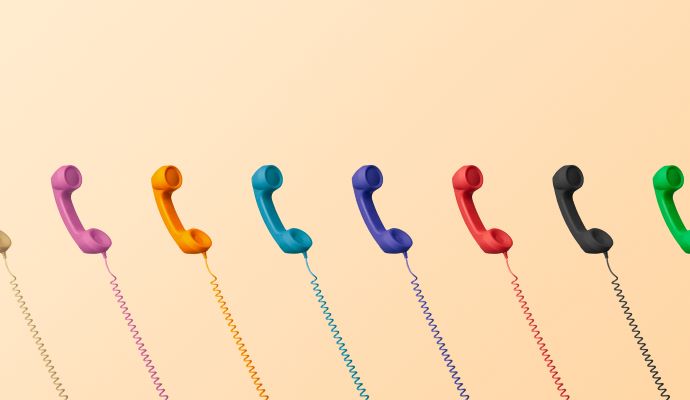Audio-Only Telehealth Frequently Used for Behavioral Healthcare
Though the uptake of audio-only telehealth claims modifiers has been low, analysis reveals the care modality is primarily used for behavioral healthcare.

Source: Getty Images
- An analysis of claims data shows that audio-only telehealth services are most commonly used to address behavioral healthcare needs.
In a new study published in JAMA Network Open, researchers examined early trends in the use of new audio-only telehealth claims modifiers 93 and FQ in Washington state.
At the onset of the COVID-19 pandemic, audio-only telehealth services could be coded with Current Procedural Terminology (CPT) codes 99441 to 99443 (evaluation and management telephone visits conducted with physicians) and 98966 to 98968 (telephone visits conducted with non-physician healthcare professionals). However, as the pandemic continued, additional types of services denoted by other CPT codes could be offered via audio-only telehealth modalities. This made it harder to capture audio-only telehealth services because of the lack of modifiers.
Accurately capturing audio-only telehealth utilization is essential as financial reimbursement for these services is still new, and debates about continuing reimbursement are ongoing. Thus, the CPT code modifiers 93 and FQ were created in 2022.
For the study, researchers analyzed claims data from the Washington All-Payer Claims Database from January to November 2022. The database included 4.3 million children and adults insured through public or private insurance plans in 2021.
There were 917,589 audio-only telehealth services in 2022 versus 3.3 million claims for audiovisual telehealth services.
Of the total number of audio-only services, 345,941 (38 percent) were appended with modifier FQ and 55,352 (6 percent) with modifier 93. Audio-only telehealth claims with modifiers 93 and FQ were frequently utilized for common behavioral health conditions, including anxiety, depression, schizophrenia, and bipolar disorders.
Further, the common CPT codes associated with modifier FQ and 93 were psychotherapy codes, behavioral health counseling and therapy, and family training and counseling for child development.
This highlights “the importance of audio-only telemedicine for facilitating the close and frequent follow-up often required for behavioral health issues,” researchers state.
Claims with the FQ modifier accounted for 22,375 services (24 percent) of all audio-only telehealth claims in January 2022. This figure rose to 47,865 claims (53 percent) in June 2022 and then dropped to 22,475 claims (30 percent) in November 2022. Claims with the 93 modifier increased from 362 in January 2022 (0.4 percent) to 8,356 in November 2022 (11 percent).
Meanwhile, claims for audiovisual telehealth services slowly declined throughout 2022, from 400,669 claims in January 2022 to 260,244 in November 2022.
The researchers also found that 309,020 audio-only service claims were captured with the 93 and FQ modifiers that would not have been captured with CPT codes alone.
“In this cohort study of a statewide all-payer claims database, modifiers 93 and FQ offered the important capability to identify audio-only telemedicine services beyond telephone-only CPT codes, but their uptake remained low,” they wrote.
Some reasons for the low uptake include the lack of familiarity and specific guidance from Medicare and commercial payers on their use.
“Nonetheless, given increasing interest from payers, including Medicare as of January 1, 2023, in requiring clinicians to utilize these modifiers, the 93 and FQ modifiers will likely continue to evolve as a valuable means to reliably identify audio-only telemedicine claims to conduct the research on quality, outcomes, and equity needed to inform policy,” the researchers wrote.
Ongoing research on audio-only telehealth quality is essential, as studies have shown that this modality is more likely to be used by underserved populations.
A study published in 2021 revealed that patients who are older, Black, live in a rural zip code, and have Medicaid coverage are less likely to use video visits than phone visits. Researchers examined data for all patients at Ann Arbor-based Michigan Medicine who had an outpatient visit eligible for telehealth from April 1, 2020, through June 30, 2020, for the study.
